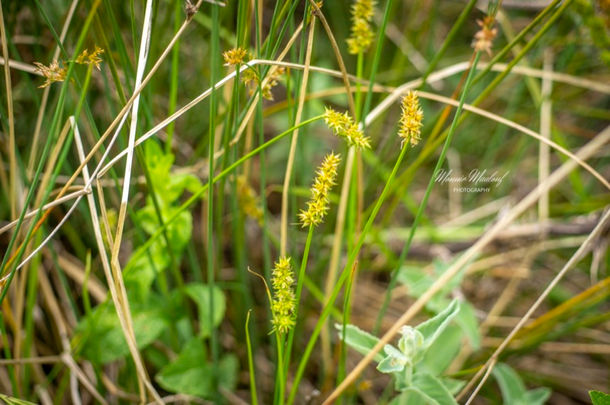Family |
Cyperaceae
Carex otrubae
Podp.
Carex otrubae Podp.
(Nouvelle Flore du Liban et de la Syrie, vol. 1, Pl. LI nº 4; 1966)
Life-form & habit: Perennial sedge, glaucescent when dry. Short, thick rhizome; stems robust, trigonous, 30–70 cm tall.
Leaves: Typically shorter than the stems, flat-bladed; ligules oval-lanceolate.
Inflorescence & flowers: Oblong to subcylindrical spikes, often interrupted at the base; each group of spikelets subtended by setaceous bracts, the lowest of which may exceed the entire spike. Uppermost spikelets ovate.
Glumes: Ovate-acute with denticulate green mucron at the tip.
Utricles: Longer than the glumes, finally divaricate-spreading, prominently veined, with scabrous margins and a relatively long beak.
Fruit: Smooth achene.
Phenology: Flowers from April to June.
Habitat & elevation: Waterlogged terrain and ditches.
Lebanese distribution: Ct. Saïda, Hadeth, Beirut, Dora, Tripoli; Mi. Ghazir, Mayrouba; Mm. Beskinta, Khan Sannine, Jabal Kneissé, ‘Aïn Dahab; Met. Zahlé; ‘Akkar: Bouqeia.
Native range: Afghanistan, Albania, Algeria, Austria, Azores, Baleares, Baltic States, Belarus, Belgium, Bulgaria, Canary Is., Central European Russia, Corse, Cyprus, Czechia-Slovakia, Denmark, East Aegean Is., Finland, France, Germany, Great Britain, Greece, Hungary, Iran, Iraq, Ireland, Italy, Kirgizstan, Kriti, Krym, Lebanon-Syria, Morocco, Netherlands, North Caucasus, North European Russia, Northwest European Russia, Norway, NW. Balkan Pen., Pakistan, Palestine, Poland, Portugal, Romania, Sardegna, Sicilia, South European Russia, Spain, Sweden, Switzerland, Tadzhikistan, Transcaucasus, Tunisia, Turkmenistan, Türkey, Türkey-in-Europe, Ukraine, Xinjiang. (KEW)
Introduced into: New Zealand North. (KEW)




